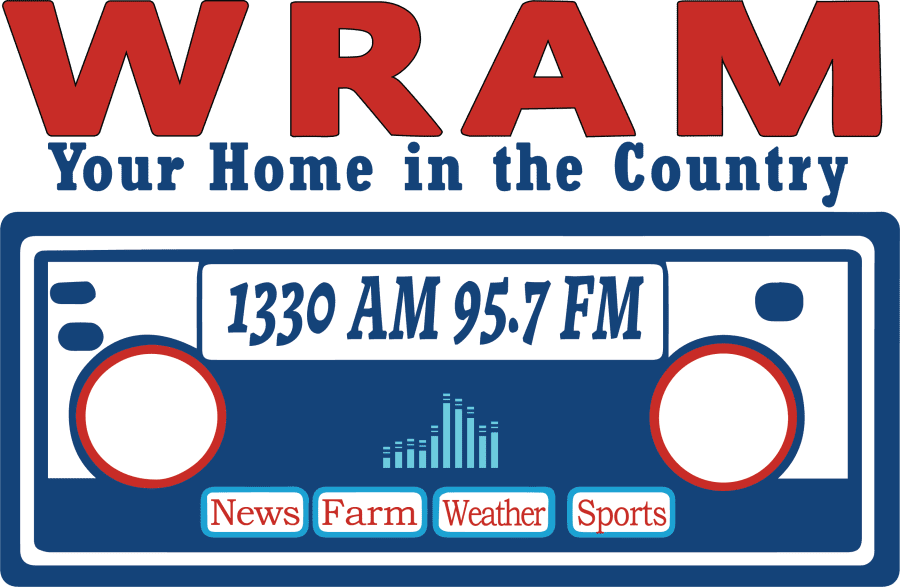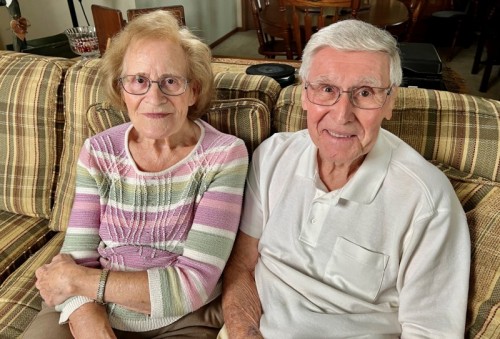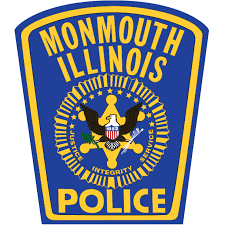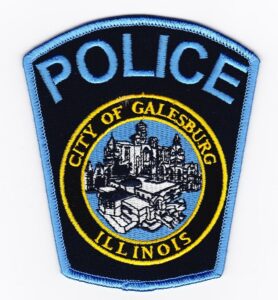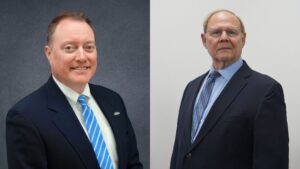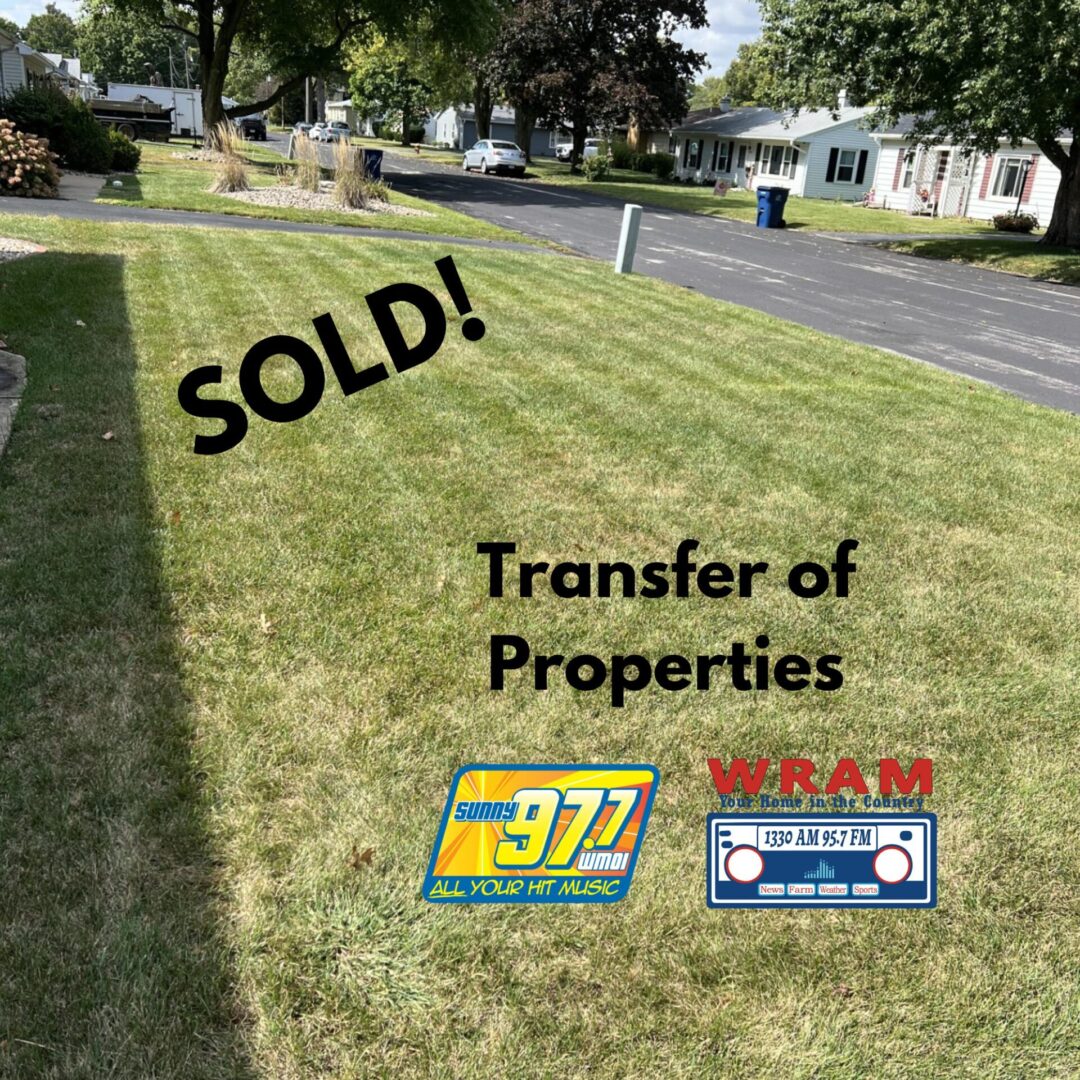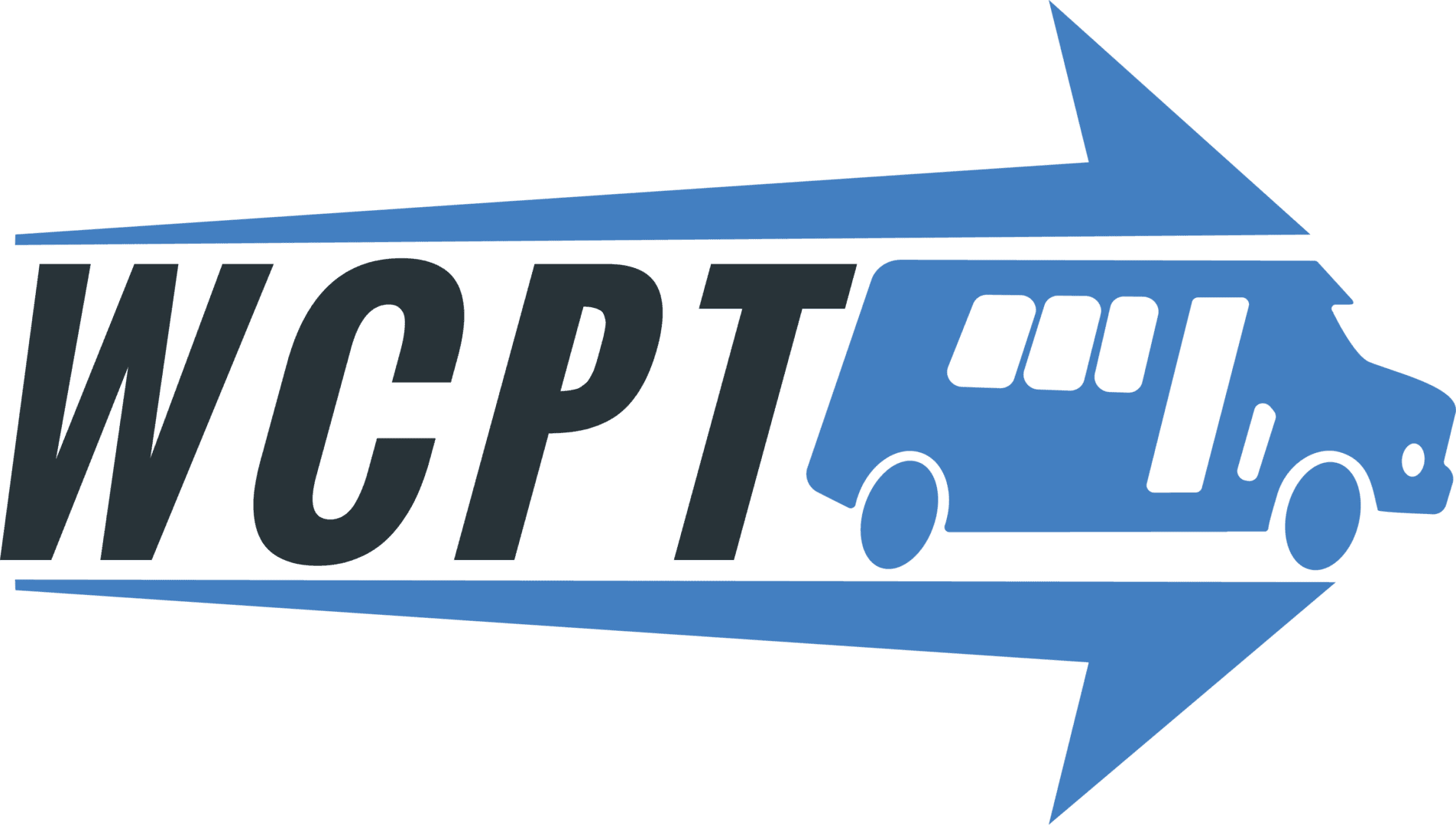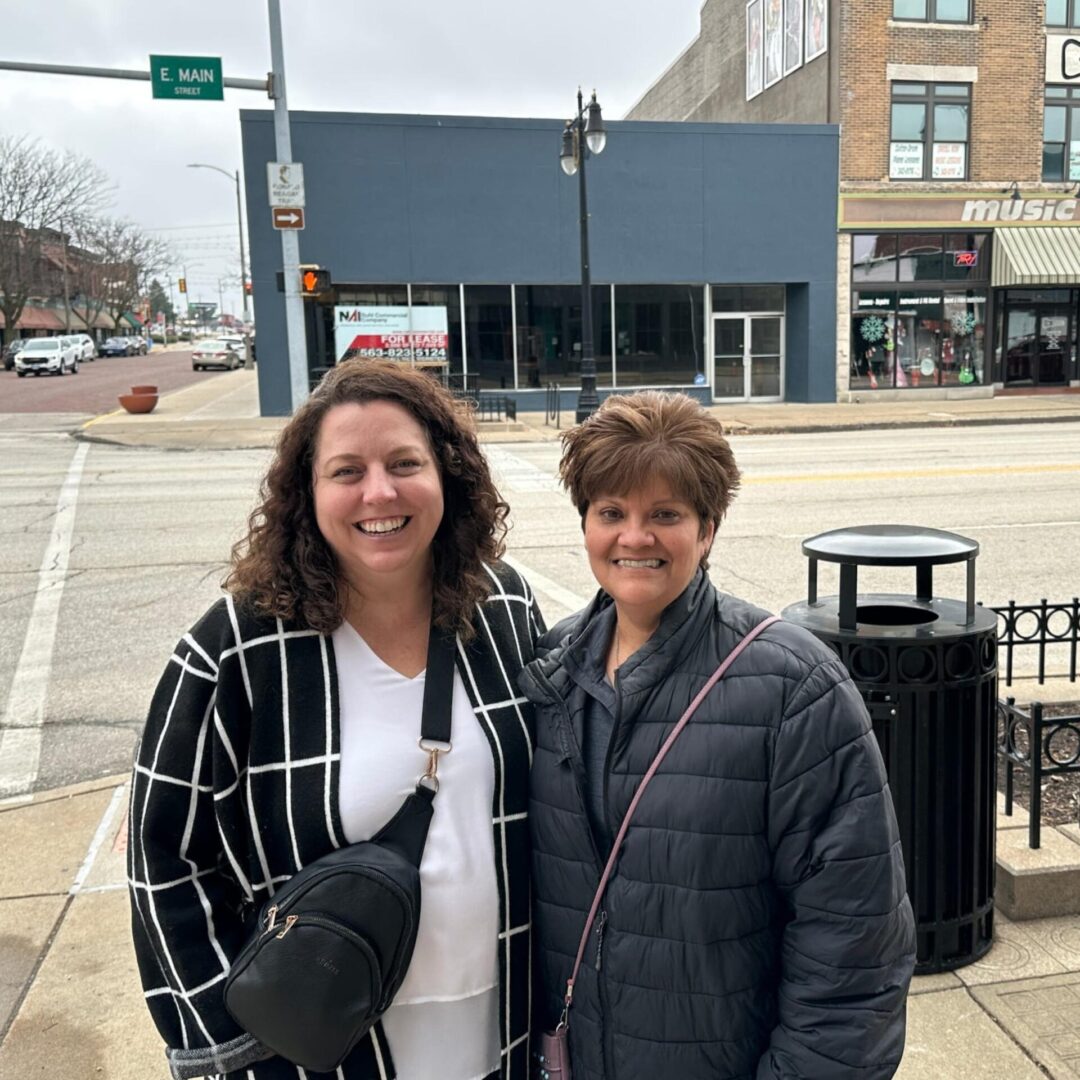A year ago, 84-year-old Jim Stickelmaier of Metamora almost died from a series of heart attacks. His wife Karen, a former nurse, had to talk him into going to the emergency department at OSF HealthCare Saint Francis Medical Center in Peoria. It was a close call but doctors were able to save him. In late July, Stickelmaier had another scary health threat. One morning, his breathing became so labored that he didn’t resist when Karen called an ambulance to rush him to the hospital.
Stickelmaier had COVID-19-related pneumonia. X-rays showed fluid on both sides of his lungs, a telltale sign of congestive heart failure. But, with treatment, Stickelmaier responded well and was quickly stabilized.
It turns out he was a perfect candidate for the new OSF OnCall Digital Hospital program that provides supportive hospital-level care, but at home. Stickelmaier was the first patient admitted to the recently launched program and he’s a believer.
“I had my own bed to be in. I have my easy chair to sit in. I have my wife and my daughter with me to keep me company and they didn’t have to worry about driving through all the traffic. It was really a good deal.”
Paul Moots, MD, chief medical officer for OSF OnCall Digital Hospital, says the program currently only involves select patients seen in the OSF Saint Francis Emergency Department (ED). Candidates have to be 18 or older, live within 30 minutes of the hospital and have Medicare as their insurer.
Dr. Moots explains patients will typically have conditions that might require a three or four day hospital stay, such as heart failure and chronic obstructive pulmonary disease (COPD) – nothing that would require a lot of medical interventions.
Think of it as a return to the house call – only with a lot more equipment and meal delivery. A special team outfitted Stickelmaier’s living room with portable oxygen (in case he needed it), a tablet for video calls and electronic bracelet he wore for safety and instant contact with his care team. There were also Bluetooth devices to monitor vital signs that sent data automatically into his electronic medical record.
Equipment is set up based on the patient’s unique needs. Dr. Moots says the standard set-up offers safety and comfort through constant connectivity.
“The patient will have a personal safety device that will allow them to contact the command center, even if they’re not able to reach the phone. We’ll have a back-up electricity device in their home and we’ll have internet connectivity provided by the digital hospital.”
Software at the OSF OnCall Digital Hospital command center in downtown Peoria can identify potential candidates so ED doctors at OSF Saint Francis don’t have to. Cassie Worrick, an advanced practice provider (APP) who helped screen Stickelmaier in the ED and cared for him at home, says she uses screening tools to evaluate a patient’s ability to manage the in-home care instructions, and to know whether they have some type of nearby support.
“They do not necessarily have to have someone living with them, absolutely not. Of course, we take into account if there’s any cognitive impairment and what that might look like. Mobility issues and what that might look like. But, it’s all on an individual basis and what makes sense.”
Before the program launched August 2, Digital Hospital operations and care teams were given a stress test of sorts during five weeks of training at Jump Trading Simulation & Education Center. Worrick says the effort simulated various scenarios using specially-trained actors filling in as patients.
“OSF has done a wonderful job, setting us up for different situations, knowing how to tackle everything, so that when we had our first patient, it was really smooth which, I think was from practicing all the ‘what ifs.’”
Each patient’s personalized schedule outlines days and times for in-home visits from the care team, such as a physical therapist, a nurse to deliver IV fluids and when needed, a night nurse to check on the patient. Worrick says APPs try to accommodate the patient’s lifestyle so, when possible, the care team schedules visits around a patient’s sleep schedule and favorite activities.
Karen Stickelmaier felt relieved not being entirely responsible for her husband’s care. Instead, OSF OnCall caregivers provided an IV and other medication, and they made sure Jim received breathing treatments as prescribed. The couple welcomed the frequent visits from his care team members who called before they came in-person and who made sure it was a good time for a virtual visit with the physician overseeing Jim’s care.
“I’m pleased to say that we had such a remarkable group of people that come in here and they were so happy. You know, and we were happy. We were looking forward to (sic) … if they said they were going to come at 2:30, they were out here changing into their, you know, everything (protective clothing). So they could come in here and we really enjoyed just having them here. They did a wonderful job.”
How hospital care at home began
The early work for the Digital Hospital program started as part of a Trailblazer challenge for OSF Mission Partners (employees) who researched more advanced home care as an idea to improve a patient’s experience and recovery. Then, the COVID-19 pandemic hit and OSF Innovation used that research to quickly set up and scale a program to reduce the stress on hospital capacity and medical providers. It also allowed monitoring and treatment for people in their homes. In the first three months, OSF was among the few health systems in the country with a program that leveraged technology and cared for more than 100 patients without forcing them to seek treatment for COVID-19 at a medical clinic or hospital.
Suzanne Hinderliter, director of Digital Care Development for OSF OnCall, said that rapid rollout provided valuable insights.
“We learned a lot about taking care of patients in the home and how valuable it was to meet the patients in their home and give them care where they were, make them feel comfortable and safe and provide a really good experience, help them manage their care because in the end, these patients are going to need to manage themselves and manage their care and their chronic diseases and medications throughout the rest of their life. And so we’re there to help make that possible in their home to ensure that we’re decreasing any barriers that they have.”
Later in the pandemic, the federal government recognized the benefit of offering hospital-level care at home and designed regulations and reimbursement for the services provided under Medicare. OSF eventually paused its novice program to allow OSF Innovation to research and validate the best technology and support service providers such as Boston-based Medically Home – a leader in care-at-home programs. Innovation teams worked with OSF OnCall leaders to coordinate pharmacy needs, meal service and delivery, imaging and transportation, along with diagnostic tools and monitoring.
Looking to create a high-tech, high-touch effort, OSF designed a robust Digital Hospital initiative to meet or surpass new regulations and launched the reimagined program.
Hinderliter says telehealth leaders continue encouraging federal lawmakers to support legislation to ensure the program’s future. Meanwhile, OSF OnCall leaders continue planning to extend Digital Hospital care to other patients, including those recovering from surgery, as it also considers expanding a Digital Hospital program for other hospitals within the OSF Ministry.
“I think we’ve invested in this as a program moving forward and knowing that this is going to be valuable in the way of the future,” says Hinderliter. “We always have to be looking at the next thing and how can we make the care better for our patients? How can we take care of patients in a different way?”
Research shows patients recover faster, and there are fewer hospital re-admissions and hospital-acquired infections with Digital Hospital programs. Plus, its estimated hospitals can save up to 30% in costs, which could translate to lower bills for patients. At the very least, individuals who qualify can receive the same high-quality care and better sleep than in a hospital.
Jim Stickelmaier agrees and says being at home is the best medicine he could receive.
“I would say definitely try it. I think they’ll find out that it was a lot easier and a lot nicer to be at home than in the hospital.”
***Courtesy of OSF HealthCare***

